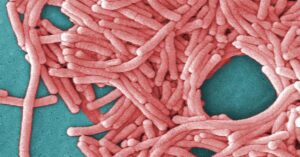
In a groundbreaking discovery, scientists from the MRC Laboratory of Medical Sciences and Imperial College London have uncovered that weight loss not only reduces fat size but also clears out damaged fat cells known as “senescent” cells. This revelation could have significant implications for managing obesity-related conditions like diabetes.
Senescent cells, which increase with obesity, are believed to contribute to the harmful effects of weight gain by producing inflammatory signals. Their removal during weight loss could be a key factor in the health improvements observed when individuals shed excess pounds. However, the exact mechanisms behind the disappearance of these cells during dieting and their persistence during weight gain remain a mystery.
Understanding Fat Cell Dynamics
Will Scott, a researcher at the MRC Laboratory, explained the team’s approach to understanding the changes in fat tissue during weight loss. “We’ve known that as fat tissue expands, its normal functions are disrupted, leading to complications in obese individuals,” Scott noted. “However, the underlying reasons for these changes, especially during weight loss, are not well understood.”
To investigate, the team worked with patients undergoing bariatric surgery, a potent weight loss intervention. By analyzing fat tissue samples from patients before and after weight loss, as well as from healthy individuals, the researchers aimed to uncover the biological processes at play.
Analyzing Fat Tissue Samples
Scott described the advanced tools used in their laboratory to examine fat tissue at a cellular level. “We can analyze every single cell in a tissue sample, allowing us to build a comprehensive picture of changes occurring during weight gain and loss,” he said. This detailed analysis revealed that obesity leads to stressed and permanently damaged cells, a process known as senescence.
“These damaged, senescent cells seem to disappear almost completely with weight loss, suggesting a self-repair mechanism in the tissue,” Scott observed.
Implications for Obesity and Diabetes
The presence of senescent cells is linked to increased risks of metabolic problems like diabetes. Scott explained that inflamed fat tissues, caused by swollen fat cells releasing stress signals, contribute to senescence. This creates a vicious cycle where senescent cells release toxic factors, further harming tissues.
With weight loss, however, these senescent cells vanish, raising questions about their fate. “They might be eliminated through programmed cell death or removed by immune cells,” Scott speculated. Although the exact process is unclear, understanding it could lead to novel treatments for obesity-related diseases.
Future Directions in Research
Scott and his team are exploring the potential of targeting senescent cells directly, without requiring weight loss. “If we can safely eliminate these cells, it could provide a new avenue for treating obesity and its complications,” he suggested. However, he cautioned that senescence plays a role in processes like wound healing, emphasizing the need for a balanced approach.
“There’s a lot of interest in treating senescence, but we must ensure that interventions do not cause harm,” Scott warned.
Looking Ahead
This discovery opens up exciting possibilities for future research and treatment strategies in the fight against obesity and diabetes. By understanding the mechanisms behind senescent cell removal, scientists hope to develop targeted therapies that improve health outcomes without the need for drastic weight loss interventions.
As research continues, the potential to revolutionize obesity management and reduce the burden of related diseases remains a promising prospect. The findings underscore the importance of ongoing scientific exploration in uncovering the complexities of human biology and its impact on health.







